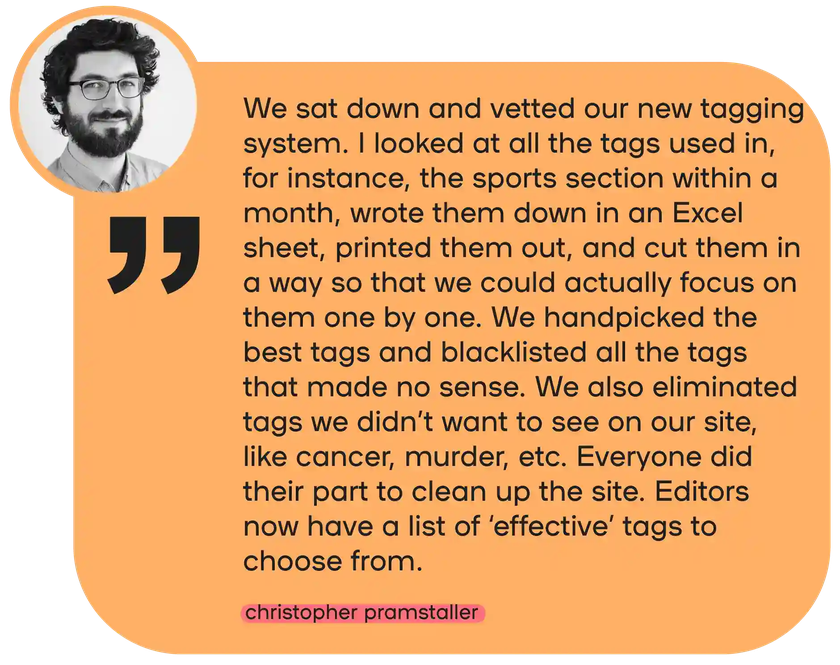So, does this new system mean that there’s a limit in terms of the number of tags allowed? Not at all. Christopher:
“There’s no limit on how many tags a certain article can have, as long as the main tag is correctly assigned. Thanks to our new system, you can actually see in the smartocto tool whether you have chosen the right or wrong tag for your article. If you look at a certain tag, let’s say a month after you placed it, and the articles don’t show up at all – you have probably missed the mark.”
Tags are great tools to organise and analyse content. They are bigger than articles but smaller than sections. For a site like Süddeutsche Zeitung, which publishes a huge amount of content on a number of different subjects each day, tags are a useful feature for readers who are looking to go deeper into a topic and learn more about it or its theme.
Steps to successful tagging
To successfully introduce a new tagging system and actually make it work, you need to prepare yourself for organisational, technical, and cultural change. It requires the right tool (or set of tools), a structure or organisation that has the expertise and capacity to use these tools, and a culture that’s open to embracing the change you’re introducing.
Every organisation is unique, but the processes and usual hiccups tend to be universal. That said, it may surprise you to hear how long it took Christopher and his team to come up with a new tagging system.
An hour.
Yup, you read that right. Organising and clustering tags for better content visibility and discoverability is essentially about making logical rules that everyone should follow. The task of cleaning up the mess that occurred due to the absence of a unified tagging system might not be exciting, but it’s necessary in order to establish a good foundation for the future. To make tags work, you have to acknowledge it’s actually a collective responsibility.
Now that you know how to organise tags, discover how smartocto can help. Drop us a line to schedule an exploratory meeting!
Want to read more from us? Sign up for our newsletter to receive updates on new blogs:





